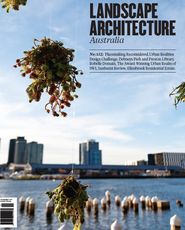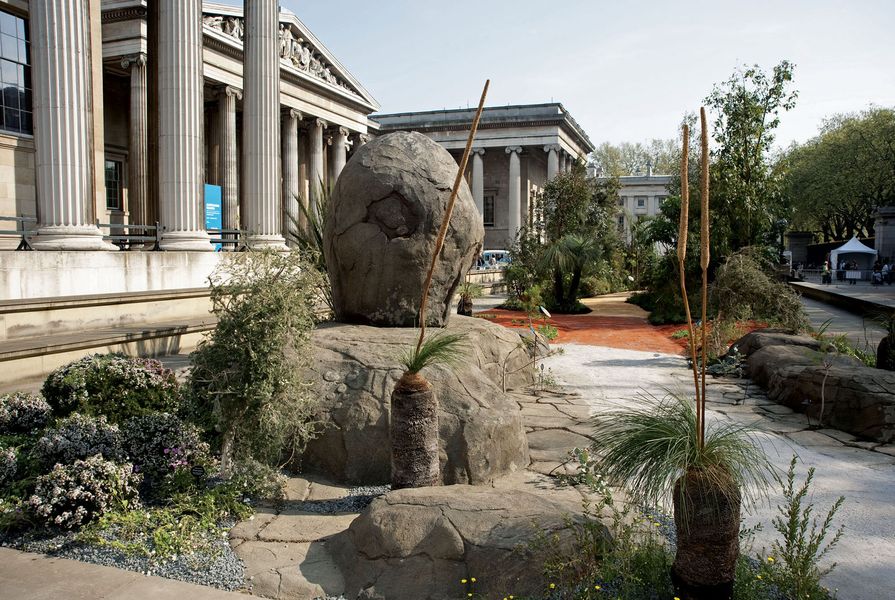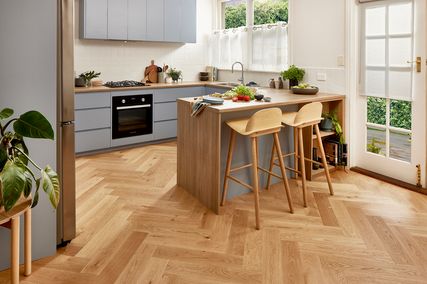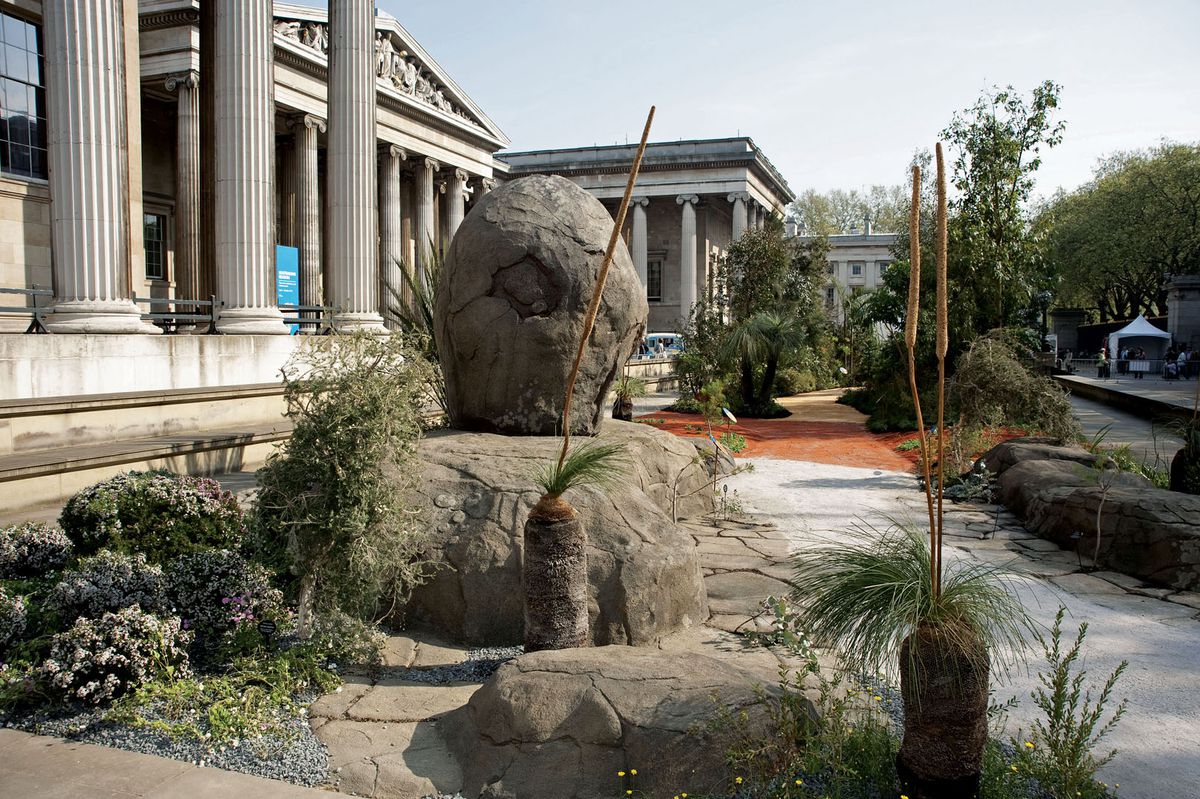The British Museum, in partnership with the Royal Botanic Gardens, Kew, recently featured Australian Season, a series of exhibitions and events “examining Australian culture through the unifying topic of landscape.” This included a living installation called Australia Landscape, created in the museum’s western forecourt.
The “season” concept sets up the exciting possibility of exploring landscape in all its complexity: as a cultural construct embodied through the artefacts and artworks in the museum’s collection; as a living discourse enacted through lectures, debates, workshops, films and performances; and as a living physical space. Australia Landscape accompanied an exhibition of outstanding woven fibre containers made by indigenous Australians and a collection of modern works on paper covering a range of themes. A particular aim of Australia Landscape was to “showcase the rich biodiversity of Australia and how these fragile systems are under threat.” Drawing connections between these different elements and the diverse range of themes they raise was an exciting and challenging design brief.
Despite this promising premise, Australia Landscape was an anticlimactic and problematic work.
The rectilinear forecourt space (around seven metres by thirty metres) was planted out with a collection of species, arranged into five raised garden beds defining a sinuous path through the middle. These were based on three geographical zones, with the ambitious intent of taking visitors “from eastern Australia’s coastal habitat, through the arid red centre, to the western Australian granite outcrop.” Consequently, too many individual species were crammed together in a limited space, the overall effect being best summed up by one Australian visitor I overheard, who paused to remark, “It’s a bit odd, isn’t it?”
The display included lots of plants but gave no sense of the Australian landscape as a whole. The scale was out of whack, with its tiny Wollemi pines and transplanted eucalypts no match for the imposing museum entrance. The quality of some of the materials was also saddening; as Germaine Greer commented on radio, one Banksia integrifolia was “in such a terrible state that you just want to cry for it.” The treatment of geology was heavy-handed, with paving material transitioning abruptly from white to red sand before terminating at a fake granite outcrop manufactured from wire and painted cement. That other essential element of the Australian landscape – water – was not featured at all. Design did not contribute to the communication of narratives – when a message was there to be found, for example when plants used to make dillybags in the museum exhibition were featured in the landscape, these relied on interpretive signs to explain their presence. This did justice neither to the conservation efforts of Kew, nor to the diverse cultural associations, which the “unifying topic” of landscape could convey. Unlike the Garden of Australian Dreams (National Museum of Australia) or the Australian Garden (Royal Botanic Gardens at Cranbourne), this work lacked the abstraction or reflective landscape interpretation necessary for such richness.
Most disconcerting, however, was the formulaic nature of the conventional botanical display. The layout was an almost exact copy of three previous gardens, beginning with a China season in 2008, followed by India in 2009 and South Africa in 2010. Swap blue marguerites with Swan River daisies and you’ve leapt from South Africa to Australia, simple as that. The catalogue for the accompanying art exhibition acknowledges that “the Australian natural environment is so inescapably different from that of Europe that it requires … a different visual language, a different understanding of space and time,” an acknowledgment lacking in the approach to the garden’s standardized design.
This project had the potential to be a meaningful and artfully designed landscape. Unfortunately Australia Landscape failed to examine the diversity of Australia’s landscape identity and squandered the opportunity for a more culturally expressive and provocative design approach. The overall effect is one of reduction – of scale, of meaning, of uniqueness. The next national landscape created in the museum/Kew “season” may be different, but it would appear that another botanically focused English garden formula is what we may expect.
Australia Landscape was on display at the British Museum, Great Russell Street, London from 21 April to 16 October 2011.
Source

Discussion
Published online: 1 Nov 2011
Words:
Nicole Porter (UK)
Images:
RBG Kew
Issue
Landscape Architecture Australia, November 2011
















